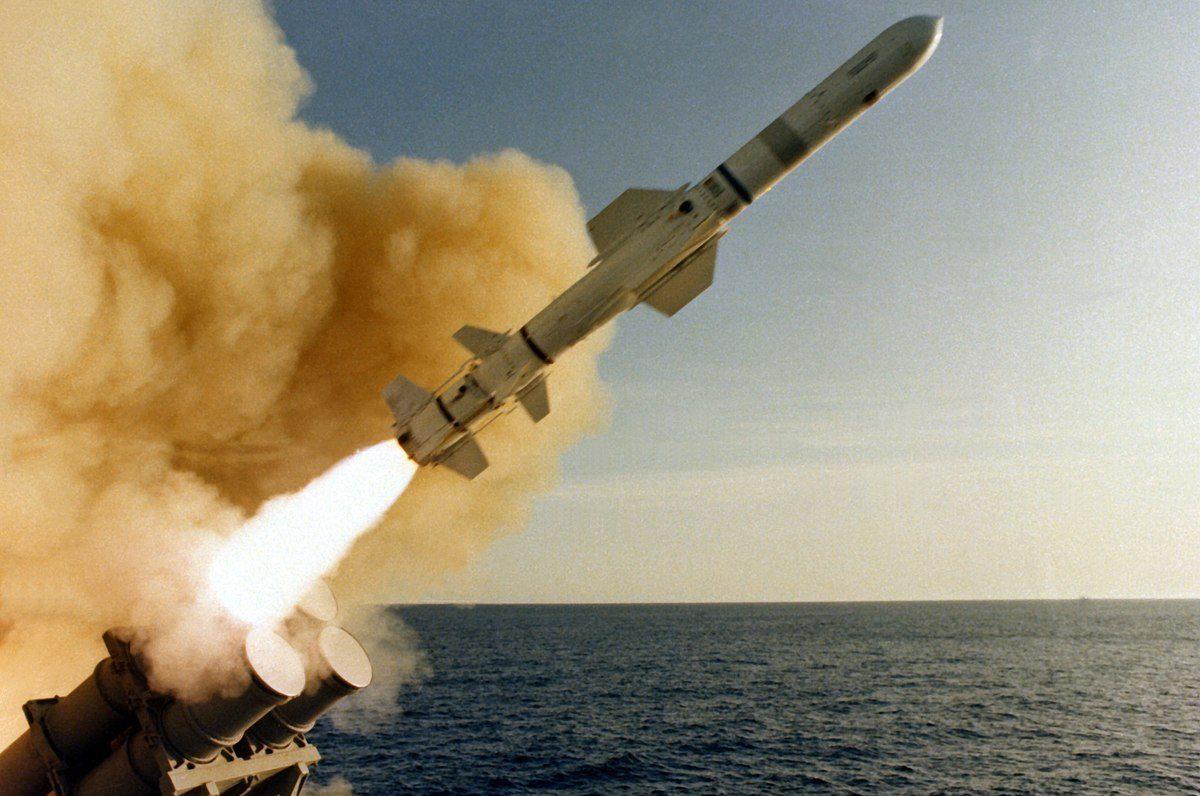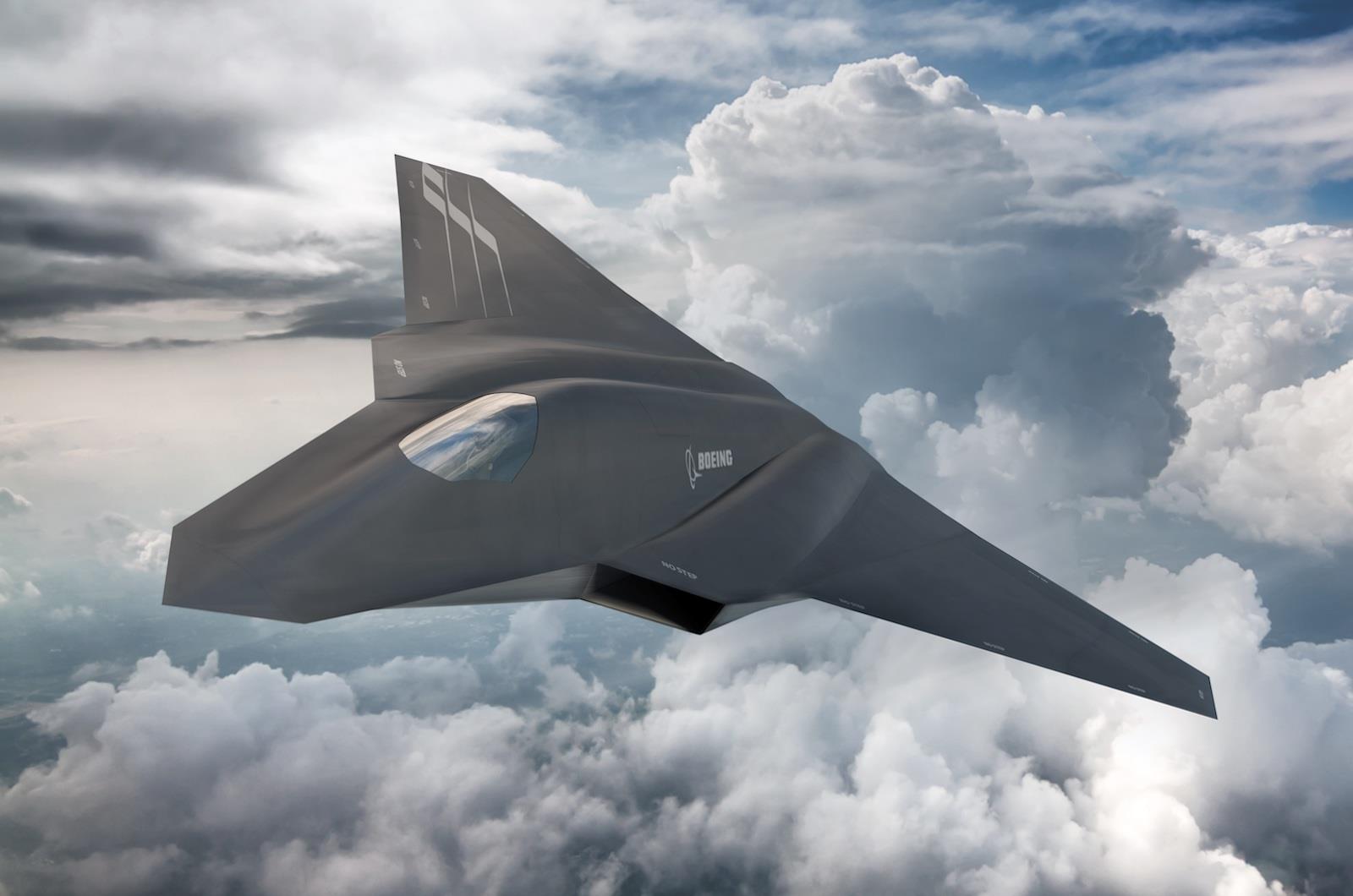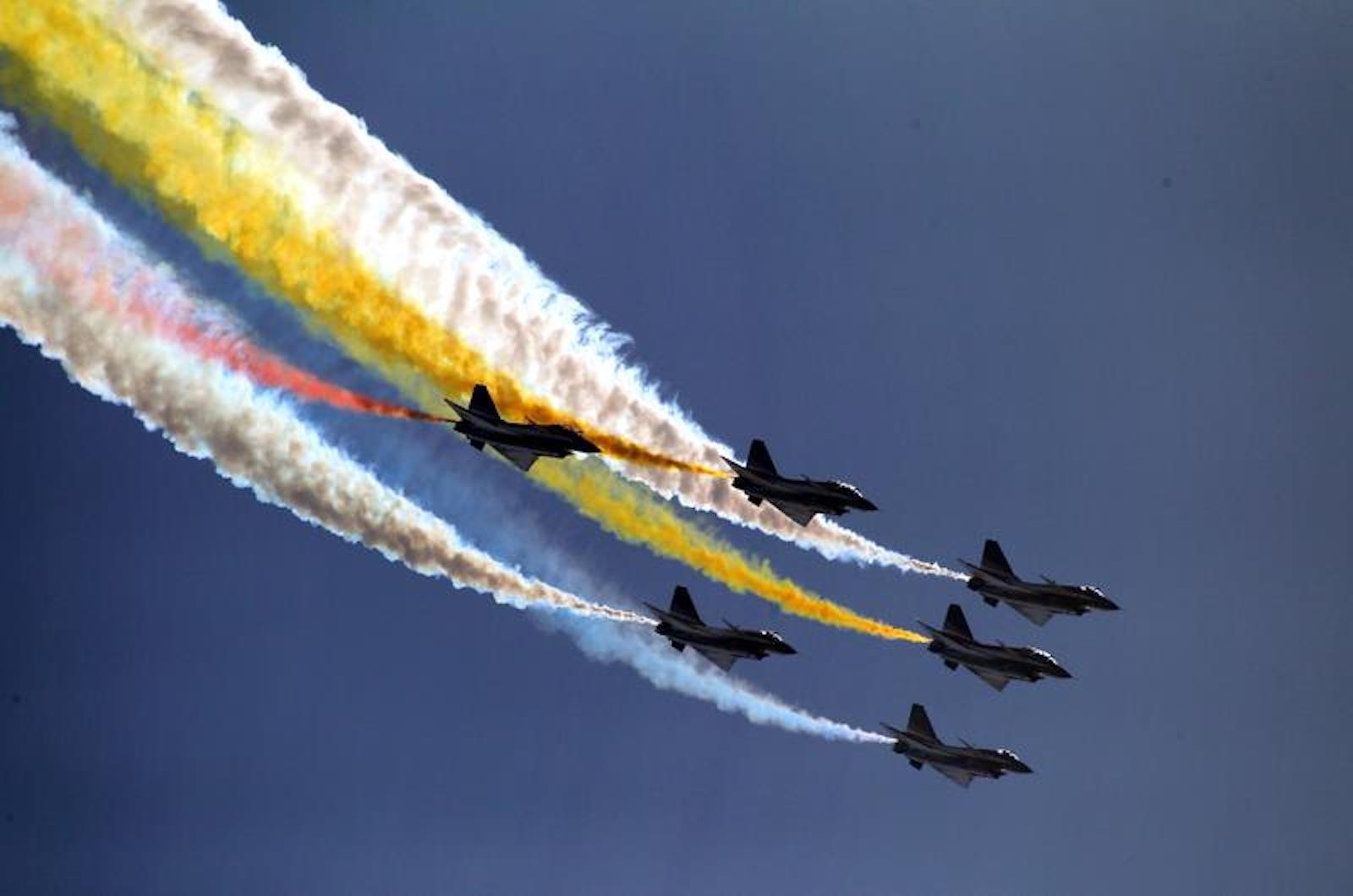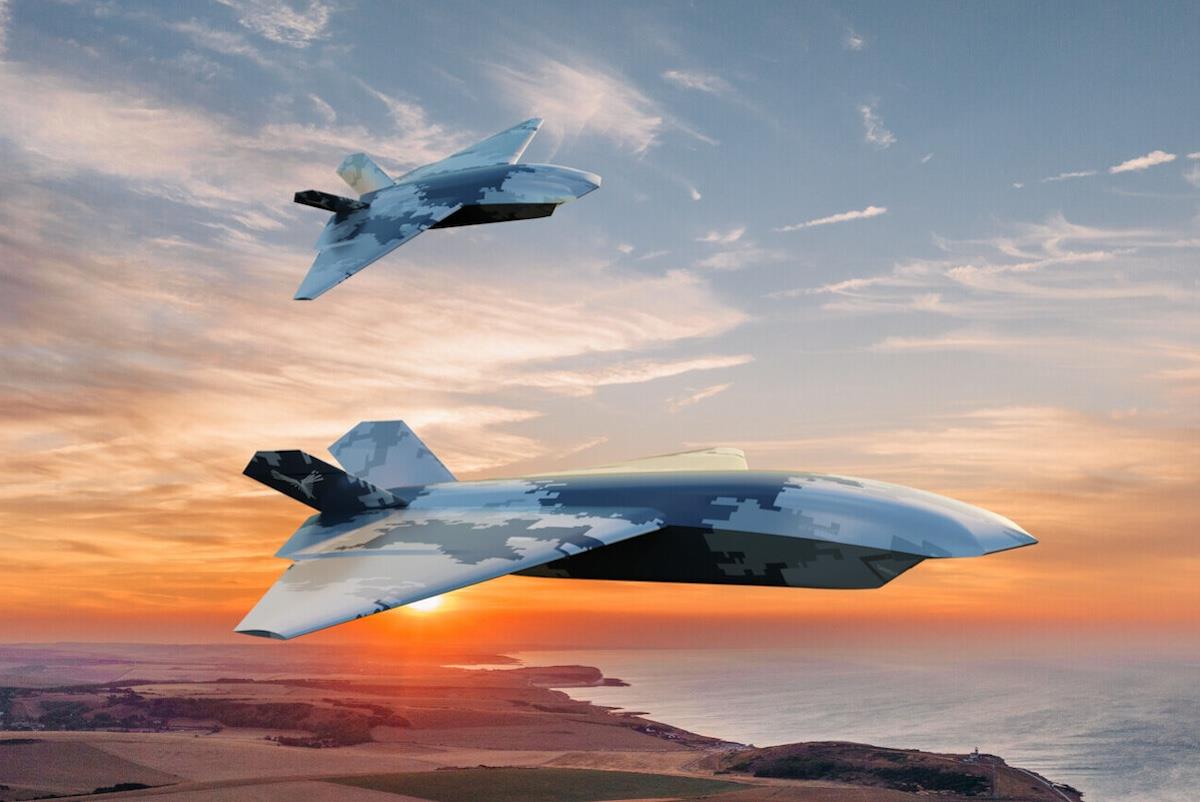
UK's 7Th-Gen Fighter Is The Future Of Airpower
This month, Breaking Defense reported that BAE Systems is discussing the development of a 7th-generation combat air platform, though the term may be outdated by the time the fighter is unveiled.
BAE Systems Combat Air Strategy Director Mike Baulkwill said that aircraft are constantly evolving and their generation-after-next aircraft will be“forever changing” through software updates and so-called spiral developments.
BAE Systems and UK partners Leonardo , MBDA and Rolls-Royce are currently developing a 6th-generation combat air capability through their Future Combat Air System (FCAS) effort, part of the Global Combat Air Program (GCAP) with Italy and Japan . It is expected to enter service in 2035.
Breaking Defense says BAE Systems presented its“Combat Air Continuum” concept, which outlines how the company sees the next 25 years of airpower and where it will invest in R&D.
In the near term, the company will call it the“second epoch,” which will see a mix of 5th– and 6th-generation platforms augmented by autonomous collaborative platforms (ACP), known as loyal wingman drones.
These systems will help extend the lifespan of older jets like the 4th-generation Eurofighter Typhoon. Breaking Defense also mentions that BAE Systems presented its latest thoughts on what its attritable ACP project might look like.
However, company officials suggested that a previously presented scale model may not reflect a final design. The ACP could be land or maritime variants, with internal payload bays and containerized storage for various payloads.
When it comes to the development of 7th-generation fighters, Peter Suciu notes in an article for The National Interest (TNI) this month that the type could feature even more advanced technologies, possibly leading to fully autonomous, unmanned combat platforms.

Fico shooter: not a lone wolf after all?

2 words explain China export 'surge': Global South

China curbs US arms makers for selling to Taiwan
Suciu mentions that military hardware advances are mostly evolutionary, building on past successes. The B-21 Raider, currently in development, is based on the successful B-2 Spirit and features a flying wing design.
He says most 6th-generation fighter designs have focused on what worked with 5th-generation aircraft, such as the F-22 and F-35, and have gone much further.
He points out that bombers such as the B-52 Stratofortress and tanks such as the M1 Abrams have been steadily upgraded. In contrast, fighter jets have not, explaining the longevity of the former platforms.
The former platforms first entered service in the 1950s and 1980s, respectively, compared to the F-22, which is slated to be replaced by the upcoming 6th-generation Next Generation Air Dominance (NGAD) platform despite entering service only in 2005.

Concept art of the possible design for the US Air Force's future Next Generation Air Dominance stealth fighter. Image: Boeing
Suciu suggests that 7th-generation fighters could be developed as a response to the capabilities of 6th-generation fighters, incorporating both their best features and additional, currently undefined capabilities to surpass previous generations.
Suciu says that 7th-generation fighters with advanced autonomous technology may raise ethical, moral and legal concerns that society needs to address.
He says that producing 7th-generation fighters will be a Western multinational collaboration due to the costs involved, the need for standard requirements and economic necessity to maximize exports to defray costs.
Suciu points out that while technology is rapidly increasing, allowing materials to be printed and computer-aided design (CAD) can also speed up development – though cost will remain a factor.
However, in a TNI article this month , Brandon Weichert argues that 6th and 7th-generation fighters are a significant waste of resources, suggesting that the US military should prioritize simpler, more cost-effective unmanned systems and space-based weapons platforms, which are more aligned with future strategic needs.
Weichert emphasizes the economic wastefulness of investing in overly complex and expensive warplanes, which may hinder the US' military competitiveness in crucial areas like space.
For example, he notes the US Air Force's retirement of the more advanced F-22 Raptor in favor of the F-35, which is less suitable for air superiority missions.
He believes that instead of investing in redundant warplanes, the US should prioritize the development of space-based weapons and focus on creating less complex, easier-to-mass-produce systems that can outmaneuver, outrun and swarm enemy targets .
Considering an evolutionary approach to military hardware and the risks associated with technological leapfrogging, the US Air Force is prioritizing the development of newer, more combat-capable versions of the F-22 Raptor jets over the older Block 20 jets, as reported by Breaking Defense in March 2024 .
US Air Force acquisition boss Andrew Hunter called the F-22 the“foundation” of airpower amidst intensifying competition with China and emphasized its vital role until the NGAD comes online.
Breaking Defense mentions
that the US Air Force initially planned to retire 32 older F-22s but the US Congress blocked the move, leading to a discussion about reallocating funds for modernization. Hunter suggested using the funds to modernize other Raptors in the fleet.
Task and Purpose reported this month that the F-22 fleet is scheduled for a $22 billion upgrade over the next decade, potentially keeping the aircraft in service until the 2040s.

Sign up for one of our free newsletters
- The Daily ReportStart your day right with Asia Times' top stories AT Weekly ReportA weekly roundup of Asia Times' most-read stories
Task and Purpose says the F-22 will receive new aviation systems including advanced avionics such as helmet-mounted sights and cutting-edge data links. Further upgrades will include stealthy external fuel tanks, the top-secret AIM-260 air-to-air missile, infrared sensor pods and a new electronic warfare suite.
Establishing air superiority over the Taiwan Strait is critical for US defense of the self-governing island at a time China is deploying increasing numbers of its J-20 stealth fighters .

China's J-20 fighters fly in formation at an air show. Image: China Daily
The stealthy fuel tanks would mitigate the F-22's range disadvantage over the Taiwan Strait while the new infrared sensor pods aim to preserve the aircraft's first-look, first-shot capability. The latest electronic warfare suite, meanwhile, would increase the F-22's survivability against enemy missiles.
Task and Purpose notes that 142 F-22s will get these upgrades, with those kits addressing corrosion, reducing maintenance hours, increasing safety and providing urgent response requirements.
While 142 upgraded F-22s may not seem like much against China's growing 5th-generation fighter fleet, the AIM-260 missile, which has active radar homing, an estimated Mach 5 speed and a 200-400 kilometer range, could be a decisive edge.
However, Task and Purpose points out that upgrading these F-22s will take considerable time and expend resources that could be used to develop a more capable fighter. It also notes concerns that the F-22 could be rendered obsolete for its mission by the time the upgrades are finished.
Thank you for registering!
An account was already registered with this email. Please check your inbox for an authentication link.

Legal Disclaimer:
MENAFN provides the information “as is” without warranty of any kind. We do not accept any responsibility or liability for the accuracy, content, images, videos, licenses, completeness, legality, or reliability of the information contained in this article. If you have any complaints or copyright issues related to this article, kindly contact the provider above.
Most popular stories
Market Research

- Manuka Honey Market Report 2024, Industry Growth, Size, Share, Top Compan...
- Modular Kitchen Market 2024, Industry Growth, Share, Size, Key Players An...
- Acrylamide Production Cost Analysis Report: A Comprehensive Assessment Of...
- Fish Sauce Market 2024, Industry Trends, Growth, Demand And Analysis Repo...
- Australia Foreign Exchange Market Size, Growth, Industry Demand And Forec...
- Cold Pressed Oil Market Trends 2024, Leading Companies Share, Size And Fo...
- Pasta Sauce Market 2024, Industry Growth, Share, Size, Key Players Analys...





















Comments
No comment